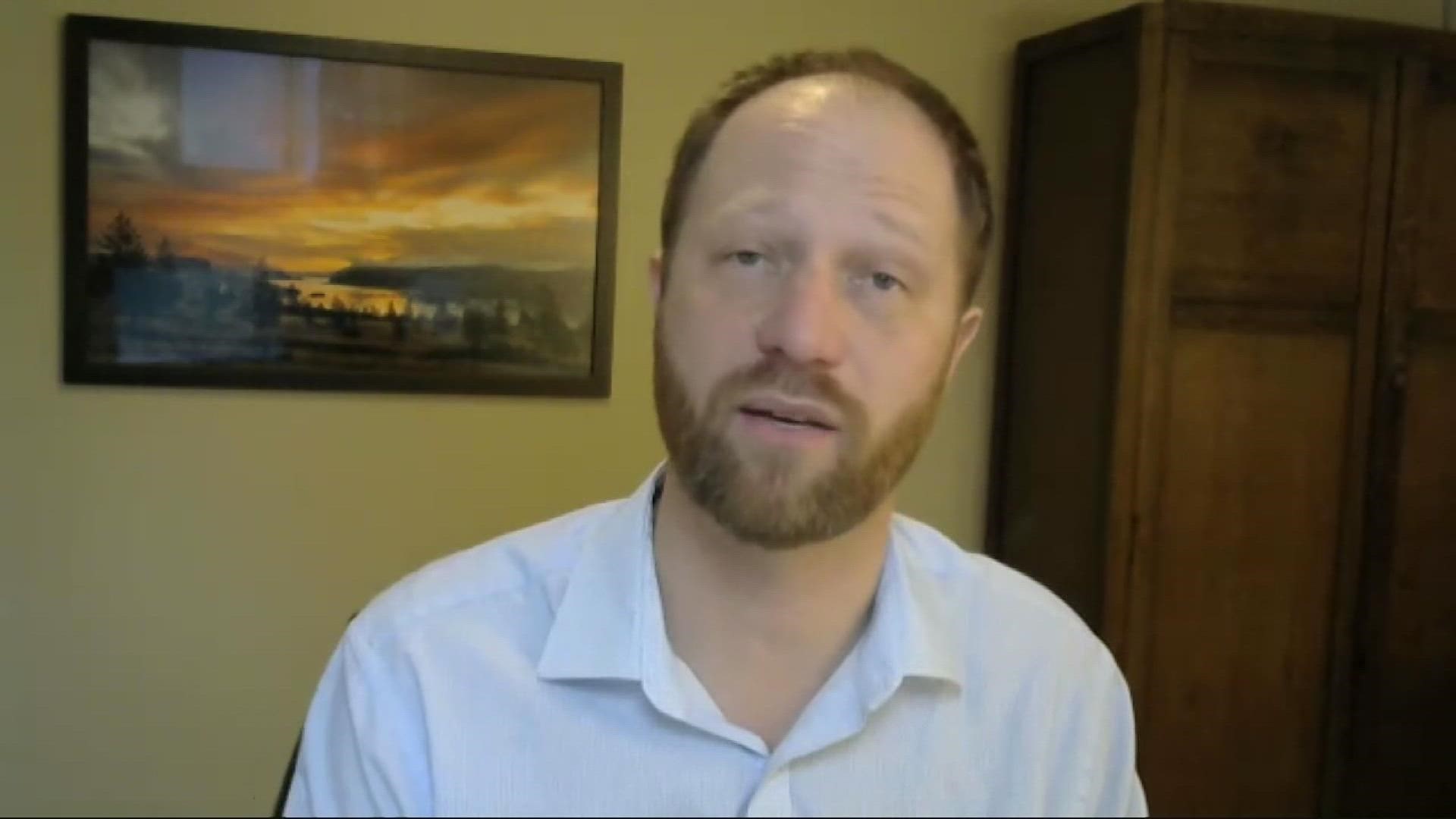PORTLAND, Ore. — Oregon appears to have hit the maximum hospitalization level for the omicron wave of COVID-19, according to the latest forecast from Oregon Health and Science University.
"We're at the peak any time now," said Dr. Peter Graven, director of OHSU's Office of Advanced Analytics.
The state had 1,087 COVID patients in hospitals as of Thursday, according to the Oregon Health Authority. That's already a small decline from 1,130 a week earlier, which may turn out to be the peak of the omicron wave.
If that's the case, the omicron peak will have ultimately fallen just short of the delta peak of 1,178 hospitalizations on Sept. 1. That's an enormous improvement from OHSU's initial omicron forecasts in December, which predicted that the wave would eclipse delta with at least 1,700 hospitalizations.
OHSU attributed the improved outcome to Oregonians taking action to slow the spread of the variant by wearing face masks, getting booster shots and avoiding large gatherings.
“The way Oregon handled omicron is almost as good as you’re going to see,” Graven said. “Oregon pushed out booster shots, Oregonians modified their behavior early, before omicron fully arrived here, and we kept our masking rates relatively high compared with other states. Because of that, our surge was way lower than other places on a per-capita basis.”
The average omicron peak across the U.S. is more than a third higher per-capita, which according to Graven would translate to about 1,540 hospitalizations in Oregon if the state had followed the pattern.
The current hospitalization level is likely to persist through the weekend, according to OHSU, then enter a steady decline that will bring hospitalization rates down to pre-omicron levels by the end of March.
Oregon's daily tally of new COVID cases peaked at 10,940 on Jan. 20 and has declined substantially since then, with the 7-day average falling from 8,214 on Jan. 20 to 5,171 as of Thursday — although that number is still much higher than any daily count recorded prior to omicron's arrival.
Despite concerns about people's immunity waning over time, Graven said he expects it to be much more difficult for the omicron variant to generate major surges in hospital cases after this.
“We’re going to still have plenty of cases in Oregon, because with any hill there are just as many infections on the way down as on the way up,” Graven said. “But we have a lot of immunity in the population now. It’s going to be harder and harder for the virus to put somebody in the hospital.”
Hospitals are likely to remain heavily taxed for the rest of February, OHSU noted, and the timing of the peak is not universal — hospitalizations in parts of southern and eastern Oregon are still on the rise, even though the Portland metro area appears to have crested.
Mask rules persist
It's unclear whether the reversing trends will lead to a quick repeal of the Oregon's face mask requirements. The OHA filed a new "permanent" rule requiring masks in K-12 schools on Jan. 28, the same day a previous temporary school masking rule was set to expire.
A similar temporary rule mandating masks in indoor public settings is set to expire Feb. 8, and for the past two months the agency has been moving forward with the process of creating a permanent replacement.
The permanent rules aren't intended to be in place forever — they're necessary because the agency isn't legally allowed to keep temporary rules in place after their built-in six-month expiration dates, which coincidentally all arrived in the middle of the omicron wave.
Once cases and hospitalization rates drop to safe levels, the OHA will lift the mask mandates, although the agency has so far declined to offer a specific metric or timeline to reach that point.
"We are still in the process of formulating our decision about an indoor mask rule, so we don’t have any additional info to share on whether or how any metrics would be integrated into the rule," the agency said in a statement on Friday. "If we issue a permanent mask rule, as we noted in our decision on the school mask rule, we would let Oregonians know when we believe it would be safe to lift that rule."
At a news conference last week, state epidemiologist and health officer Dr. Dean Sidelinger suggested the agency could be in a position to relax the mask rule within about two months.

